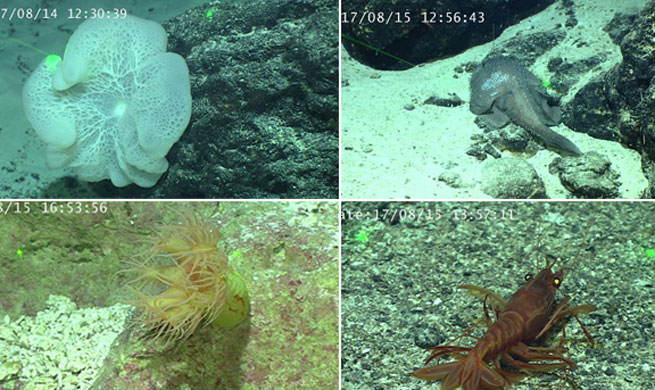SAN FRANCISCO, Aug. 16 (Xinhua) -- Five researchers at Oregon State University (OSU) have received 1 million U.S. dollars from the National Science Foundation (NSF) to study the operation of autonomous marine vehicles.
The NSF grant will fund a project that builds on cross-campus collaborations by bringing engineers and ocean scientists together to produce innovations in OSU-developed ocean-sensing technologies such as ROSS - the robotic oceanographer surface sampler - and advanced underwater glider operations.
Announcing the grant on Wednesday, OSU said Geoff Hollinger, a roboticist, and Julie A. Adams, a computer scientist, of the College of Engineering; and Jack Barth, of the Marine Studies Initiative, Jonathan Nash and Kipp Shearman, both physical oceanographers, of the College of Earth, Ocean and Atmospheric Sciences are the principal investigators.
The project seeks to improve marine vehicles' autonomy capabilities and aims to increase their "neglect tolerance," namely the ability to withstand long periods with little to no communication from a human technician.
"In the current state of practice, human operators must provide specific waypoints for the vehicles to follow, which is both time consuming and inflexible," explained Hollinger in a news release."The research in this project will develop autonomy capabilities that facilitate on-vehicle intelligence, leading to longer duration deployments of unmanned underwater and surface vehicles as well as improving the oceanographic data collected and reducing the cost of these deployments."
The OSU College of Engineering established the Collaborative Robotics and Intelligent Systems Institute three months to advance the theory, design, development and deployment of robots and intelligent systems able to collaborate with people. Prior to the new grant, the college received 3.6 million dollars in robotics-related funding in fiscal year 2017, and 6.5 million dollars from the Defense Advanced Research Projects Agency (DARPA) to make artificial-intelligence-based systems.
















